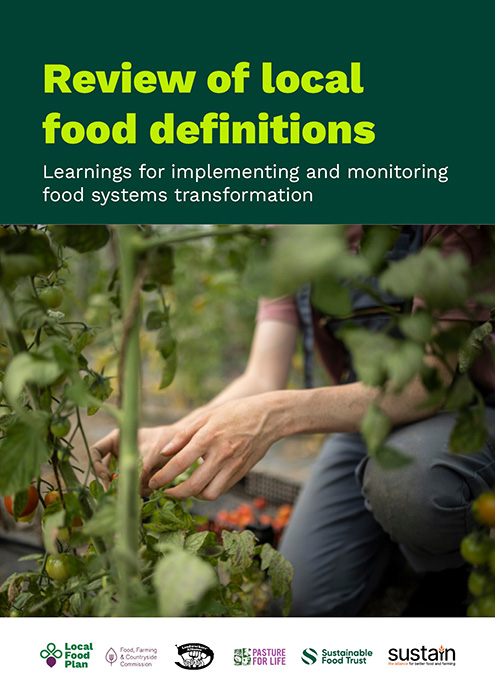Learnings for implementing and monitoring food systems transformation.
The authors of this report analysed local food definitions from articles and reports to create two contrasting local food system (LFS) models. The solutions and suggested monitoring indicators presented herein aim to address the needs of different LFS types.
Analysis of the definitions led to the identification of ten themes (Fig. 1), which reflect the elements from which LFS definitions can be assembled. Two LFS models, differing across these themes, were created to explore the tensions between the aims and requirements of different forms of LFS. Real LFS are usually diverse mixtures of these two models.
The market-driven model of local food imagines LFS focused on improving returns to producers through the leverage of stories about the traditions, region and sustainability of production and the characteristics of products. The community/social-driven model imagines LFS based on a desire to use local food to achieve social aims, including improved access to high quality food.
The models highlight two needs which, in the current food system, are often in opposition. Exploring these needs enabled us to consider how LFS might meet both goals – providing decent livelihoods for food producers and food system workers as well as access to high quality food for all – while also delivering on environmental sustainability.
The twelve solutions – drawn from existing practices and initiatives as well as insights from this work – focus on creating LFS which can be resilient in delivering on these needs.
Monitoring is vital to track change, assess progress against desired outcomes, learn iteratively from experience and create ever more effective approaches to growing and governing LFS. However, monitoring is an expression of power that can shape the systems it observes, therefore, monitoring systems and indicators should be chosen with the involvement and positive engagement of those engaged in LFS on the ground, in keeping with the local empowerment and democratic values at the heart of localism.
The suggested metrics in this report should be considered as starting points for collaborative indicator development and governance through the establishment of a local food monitoring, reporting and data sharing network based on existing initiatives and resources.
 Review of local food definitions
Review of local food definitions
2025 | 2149Kb
© Sustain 2025 Registered charity (no. 1018643) Data privacy & cookies